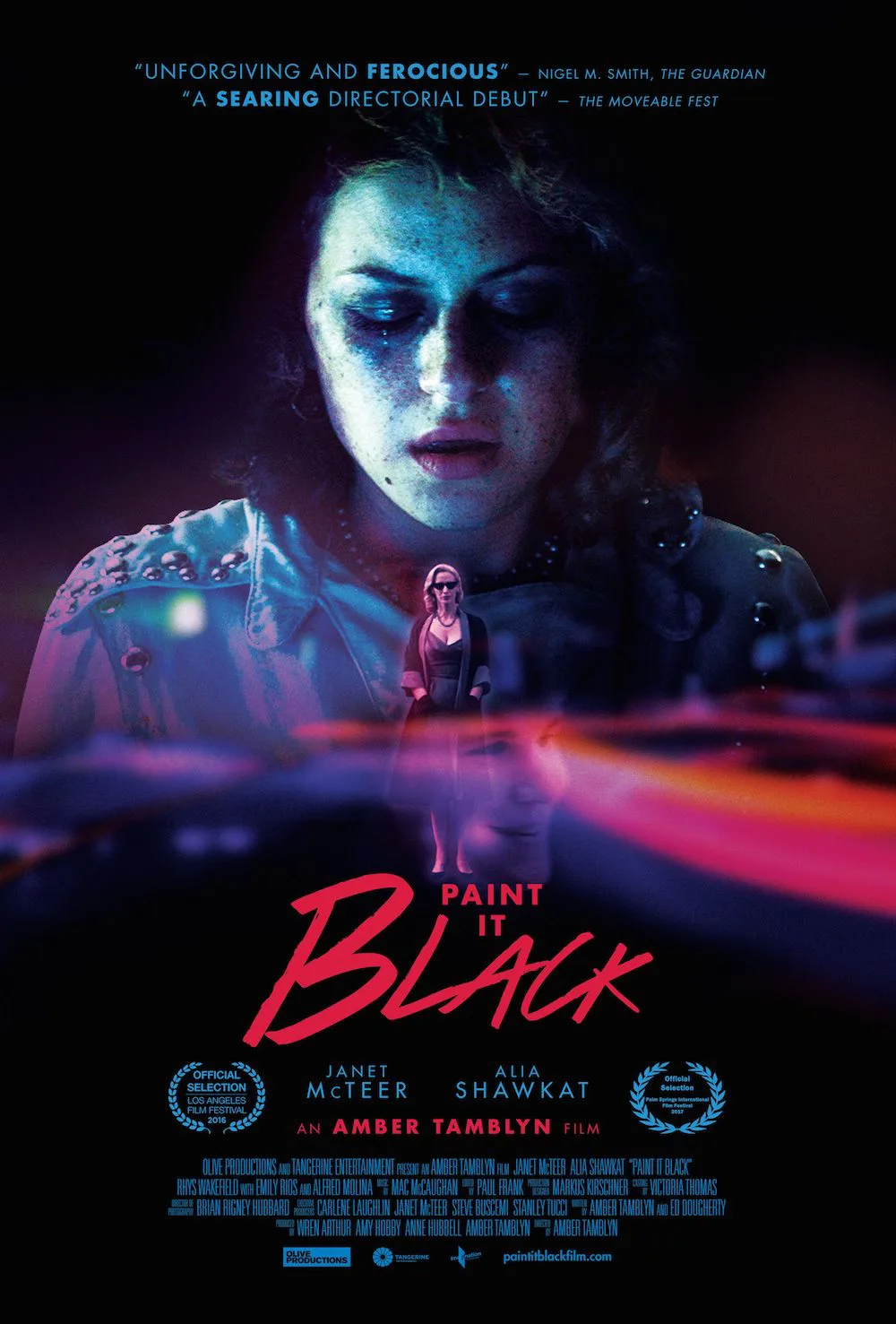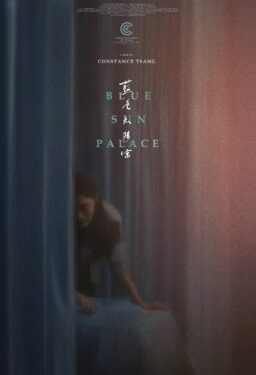The camera surveys a motel room late in “Paint It Black.” It spins on an axis, taking in the entirety of the space. We know that the room is the site of a suicide. We know the general details—a self-inflicted gunshot to the head—but little more.
The look at the room isn’t of much help, because someone who works at the motel has started to clean it. As the camera spins, we see patches of bright white paint, one spot larger than the rest. Near the bottom of the larger patch, there’s a subtle note of red coming through the white. The mattress is standing upright next to where it should be lying flat. As camera reaches the end of its width, there’s a dark stain near the edge of the mattress. Atop a dresser, next to where the rotating shot initially started, there’s a row of cleaning agents and supplies.
This shot goes on for a notable amount of time, because director Amber Tamblyn wants us to note these details. The first-time director knows that we’ll be searching for something in this room, just as the character who has come to this hotel, looking for her own answers, is at the moment.
If we didn’t know the context of what happened here, though, it simply would look like a rundown motel room, where someone has started the task of making it look presentable. It’s a mess, and in its own way, the fact of the suicide becomes its own answer. The question may not seem as significant as the one that the character in the room must be asking herself: Why did this young man end his own life? The fact of the suicide does answer another question: Why is this room a mess? It also answers another one: Why is this young woman at this motel, when she could be pretty much anywhere else in the world?
The film, co-written by Tamblyn and Ed Dougherty (based on the novel by Janet Fitch), is not about reasons—either one conclusive one or any odd number of them. It’s about repercussions. This is a film about characters confronting the fallout of a suicide. They are characters who are in such shock—are such a mess—over the fact of the suicide that they are incapable of even considering what the reason or reasons behind it could be. They are desperate to cling to the facts of the young man’s life, because the thought of his death is simply too much to bear.
One of those characters is the young man’s live-in girlfriend Josie (Alia Shawkat), whose life, in a strange way, has come to be defined by the young man. She was defined by him even before he took his own life. His name is Michael (Rhys Wakefield), and the two met when she was modeling for an art class in which he was a participant. Their life together, which we see in flashbacks, is exclusively defined by him—his dreams, his talent, his demons.
He was an artist. Josie appears to possess no set goals. She exists as a muse of sorts—to Michael when he drew her and, in the present, to her filmmaker friend (played by Simon Helberg), who’s shooting a low-budget movie that seems to have more than a tangential connection to Josie’s experiences.
Whomever Josie may be as her own person is an unknown. Now, she’s defined by her boyfriend’s suicide, which she worries she might have caused in some way or another.
The other character is Michael’s mother Meredith (Janet McTeer, deftly walking a fine line between realism and melodrama), a wealthy woman who lives in a grand mansion, where Josie and Michael had their first date by sneaking onto the grounds for a swim. She’s a concert pianist, and within the expanse of the mansion’s great hall, she pounds away at Rachmaninoff or sentimentally loses herself in Brahms—her son’s favorite composer, thanks, in no small part, to her. Meredith’s son was all she had, save for a career that put some distance between them and a family history of mental illness that she kept quiet—perhaps to the further destruction of her family.
Tamblyn alternately plays the resulting conflict between the two women as a thriller, in which Meredith seems prepared to ruin Josie’s life (A stranger is watching the young woman from a distance, and there’s an early threat that the mother could have the girlfriend “taken care of”), and as a piece of Gothic horror, in which Josie finds herself in that dark, dreary mansion and in the psychological clutches of a woman who wants to control everything. Even after Michael’s death, Meredith still hasn’t realized that she cannot. She definitely hasn’t learned that there are consequences to trying.
Josie’s experience is filtered through a series of daytime dreams and visions—of actual glimpses of the past and of uncertain events in the present. They’re reflections of guilt, regret, and her deepest fears, presented with the logic of a dream and punctuated by Shawkat’s performance, in which her face, full of despair and uncertainty, grounds those dreams in the reality of Josie’s situation.
“Paint It Black” doesn’t offer clear answers to Michael’s suicide, because it’s wise enough not to go looking for them. The film, a strong directorial debut from Tamblyn, is about living with the results, and it creates a waking nightmare of seemingly unresolvable pain and anguish. The question isn’t why Michael killed himself. It’s if the survivors will accept that as a simple but difficult fact.




















